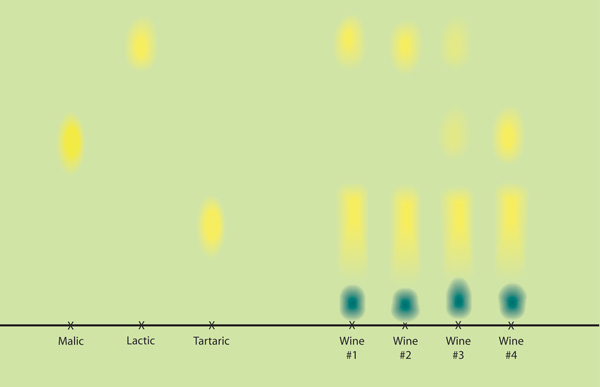MLF is a bit confusing for some because it’s called a “fermentation” but it’s certainly not as active, visible, smellable, and in your face as your primary sugar-to-alcohol fermentation. MLF happens when naturally present (or artificially introduced) bacteria turn the malic acid in wine into lactic acid, producing a small amount of carbon dioxide gas and some aroma and mouthfeel components. I agree, you should put your Sangiovese through MLF; it’ll deacidify the wine a bit, will round out flavors, and will prevent MLF happening later in the bottle.

MLF sometimes happens on its own, concurrently with the primary fermentation, so it may go to completion without you noticing anything at all. After primary is over, most commercial winemakers will run an enzymatic assay that measures the level of malic acid in the wine; this way they can tell if MLF is complete or not. Unfortunately, most home winemakers don’t have access to the expensive equipment and reagents to do this kind of analysis, but luckily you can still send a sample of wine to a commercial wine lab or do the old fashioned (and cheaper) paper chromatography assay. Kits can be purchased from scientific supply houses and from most winemaking stores and websites for under $50.
If you inoculate for MLF (I like the freeze-dried variety available from Gusmer Enterprises), depending on how quickly the fermentation happens, you may or may not notice anything. Sometimes, if you put your ear to the bunghole, you’ll be able to hear little “pinpricking” bubbles of CO2 being evolved, though not always. In cool climates, especially, and in high-acid wines where the bacteria have a hard time surviving, you may not be able to hear the fermentation happening at all. Slow MLF can take months to completely turn all the malic acid in the wine into lactic acid; watch out because the wine will not be protected by a lot of carbon dioxide gas at this time so is very susceptible to infection by spoilage bacteria and increased volatile acidity (VA) production.
If you don’t hear any pinpricks and you suspect your MLF is dragging on for over a month or two, it’s always wise to use a chromatography kit to check for and/or monitor the completion of the fermentation. Unfortunately, chromatography isn’t a great quantitative assay — it is only an “indicator” assay and shows a malic and lactic acid “signature” that appears as a colored blob on the chromatography paper. Experienced chromatographers can see differences in the sizes of the respective blobs (as MLF finishes, the malic acid blob disappears and the lactic blob gets bigger) and track the relative completeness of MLF, but it does take some practice. This is why commercial winemakers and serious home winemakers are moving away from chromatography and send samples to wine labs for an empirical numerical result. In addition, the solvent (butanol, formic acid, and bromocresol green indicator) needed for the chromatography assay is really toxic so I prefer to spend the money on enzymatic assays in order to keep it out of my cellar.
Either way you choose to monitor your fermentation, in red wines you usually want MLF to finish. For whites, whether you add SO2 early and keep some malic acid for crispness is up to you and your stylistic desires. I never recommend MLF for rosés as I find the bright pink color suffers and the wine can turn orange and even brown if left to go 100% ML complete. Remember, if you have residual malic acid in your wine you will have to either bottle with high (over 35 ppm) levels of free SO2 or sterile filter before bottling. Malolactic bacteria are ubiquitous in the environment (you’re probably breathing some in right now), so if you’ve got malic acid in your wine, it’s almost certain the ML bacteria will chow on your wine and you’ll get CO2 bubbles and off-aromas in the bottle.




